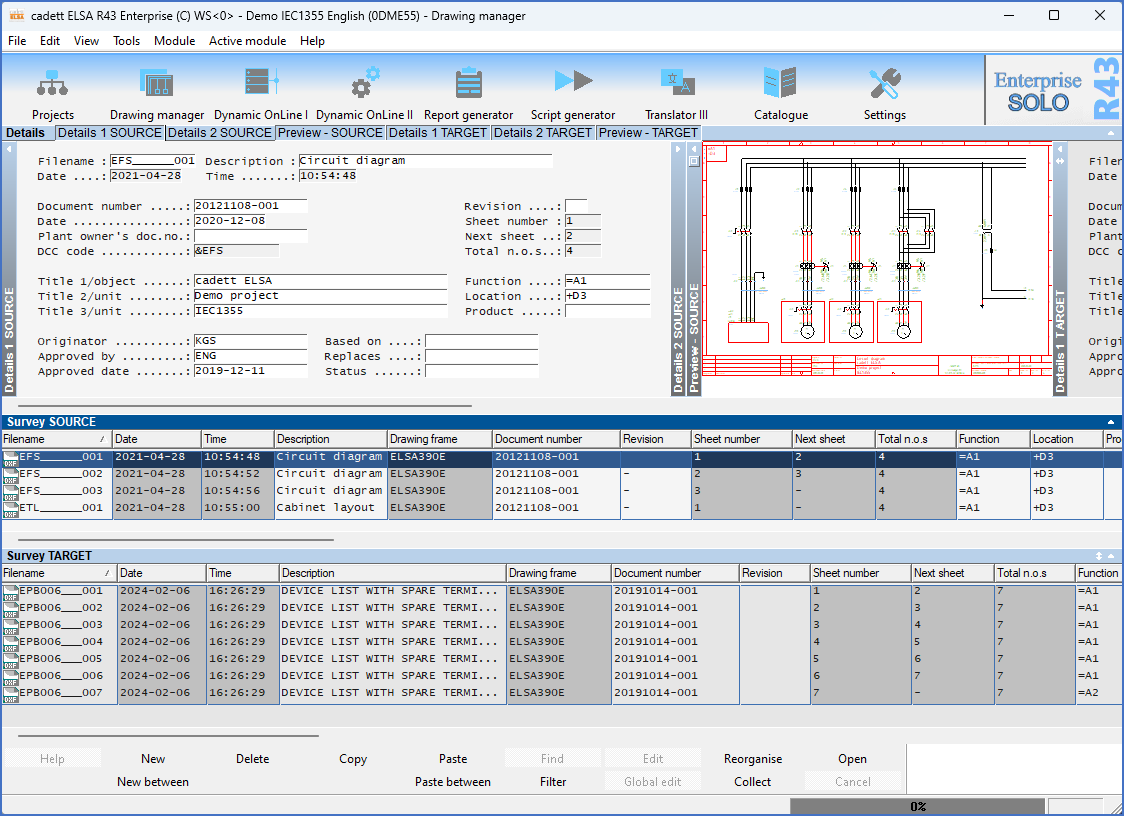|
<< Click to Display Table of Contents >> How to use the Drawing Manager |
  
|
|
<< Click to Display Table of Contents >> How to use the Drawing Manager |
  
|
You can access the Drawing Manager by first opening a project and then clicking the Drawing Manager icon in the top of the cadett ELSA main window.
If you have opened a completely new project that does not contain any drawing sheets, you will probably note that directly, as the Drawing Manager then has nothing to present. If the project in question instead has a content, you will see both an overview and a detailed presentation of that content.
The Drawing Manager is equipped with a so-called "viewer" that allows you to preview drawing sheets and even make test prints without even starting AutoCAD.
The text based information that you see about each drawing sheet in the Drawing Manager corresponds to the title field. There is a two-way communication between the Drawing Manager and the title field. Thus, if you change any text in the Drawing Manager, that information will be automatically transferred to the title field. In the same way, changes in the title field will be automatically transferred to the Drawing Manager. This transfer of information takes advantage of the fact that cadett ELSA uses DXF files to store the drawing sheets, which makes it possible to write changes directly into the files. That makes updating drawing sheets 50 - 100 times faster than when using AutoCAD for the same purpose.

Figure 533: The Drawing Manager in cadett ELSA
It is important to note already at this early stage that the Drawing Manager has vast configuration options. The drawing frames with their title fields can look almost any way, and the presentation in the Drawing Manager can be adapted to this. Which fields you want to use, what they should be called, field lengths, what the detailed view should look like, where corresponding information can be found in the title fields, and much more is fully configurable.
The most common adaptation made in cadett ELSA, is to create a drawing frame with a user defined title field and an associated detailed view. The detailed view is controlled by a so-called mask file. The mask file determines what the detailed view should look like, which fields are there, which field lengths should be used and how this information should interact with the title field, meaning what information is found where and how it should be transferred between the title field and the Drawing Manager.
The screen layout, meaning what to find and where in the Drawing Manager, is discussed in the next sub-topic.